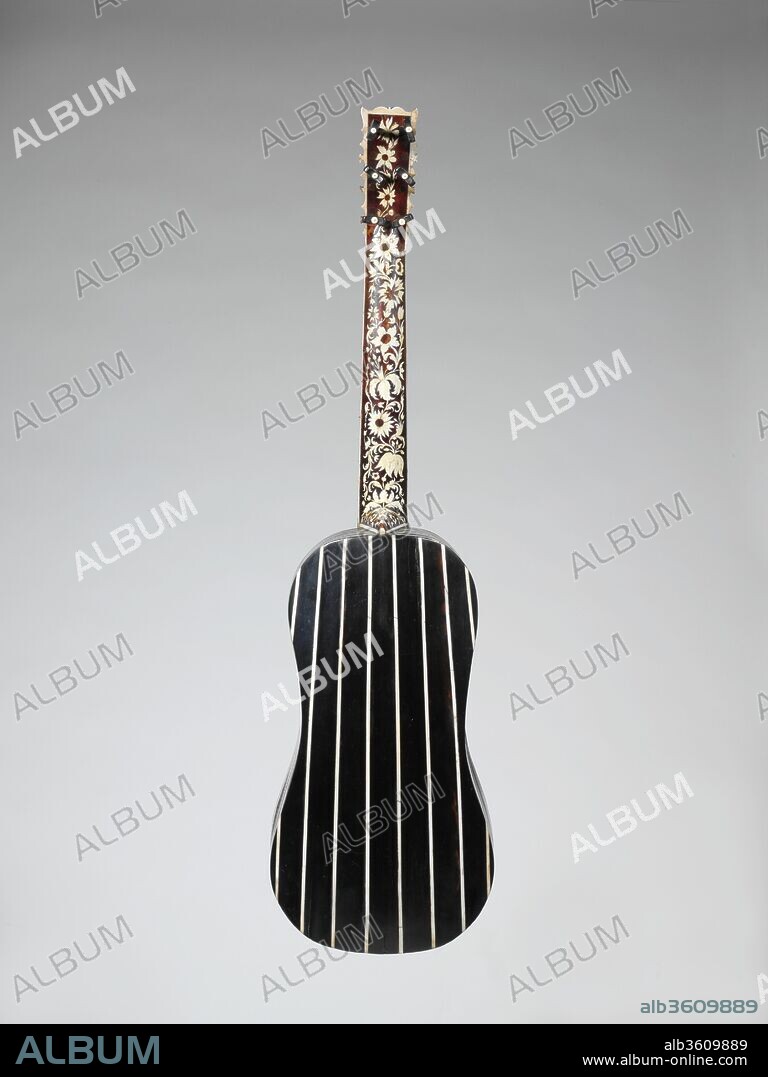alb3609889
GUITAR

|
Add to another lightbox |
|
Add to another lightbox |



Buy this image.
Select the use:

Title:
GUITAR
Caption:
Guitar. Culture: German. Maker: Joachim Tielke (German, 1641-1719). Date: ca. 1695-99.
The Baroque guitar is similar in shape and body to earlier guitars, but is typified by five double courses of strings (which appeared as early as the late fifteenth century). From about 1600 until the mid-eighteenth century, its popularity supplanted both the four-course guitar and the six- or seven-course vihuela. The five-course Baroque guitar was a bit larger than the earlier model, averaging approximately 92 centimeters long, with string lengths of 63-70 centimeters. Guitars used by musicians were probably relatively plain, perhaps typified by many Spanish guitars of the period. However, many decorative guitars survive, including those by the Sellas family of Venice and Bologna and by Jean-Baptiste Voboam in Paris (1990.103; 1989.147).
Tielke's use and mastery of expensive material is proof of the financial success of his workshop and business. This instrument's ribs and back are constructed with alternating strips of ebony and ivory, and the edges of the sound table and sound hole are decorated with ornate inlay. There is evidence that the sound hole once held a rosette.
Technique/material:
Wood, ivory, ebony
Museum:
Metropolitan Museum of Art, New York, USA
Maker:
Joachim Tielke (German, 1641-1719)
Credit:
Album / Metropolitan Museum of Art, NY
Releases:
Model: No - Property: No
Rights questions?
Rights questions?
Image size:
3150 x 4200 px | 37.9 MB
Print size:
26.7 x 35.6 cm | 10.5 x 14.0 in (300 dpi)
Keywords:
ANATOMY: BONES • BONE • CHORDOPHONE-LUTE-PLUCKED-FRETTED • CHORDOPHONES • EBONY • EUROPE • GERMANY • GUITARS • HAMBURG • HAMBURG, GERMANY • IVORY • JOACHIM TIELKE (GERMAN, 1641-1719) • LUTES • METROPOLITAN MUSEUM OF ART, NEW YORK, USA • MUSIC INSTRUMENTS • MUSICAL INSTRUMENTS • MUSICAL_INSTRUMENTS • WOOD • WOOD, IVORY, EBONY
 Pinterest
Pinterest Twitter
Twitter Facebook
Facebook Copy link
Copy link Email
Email
